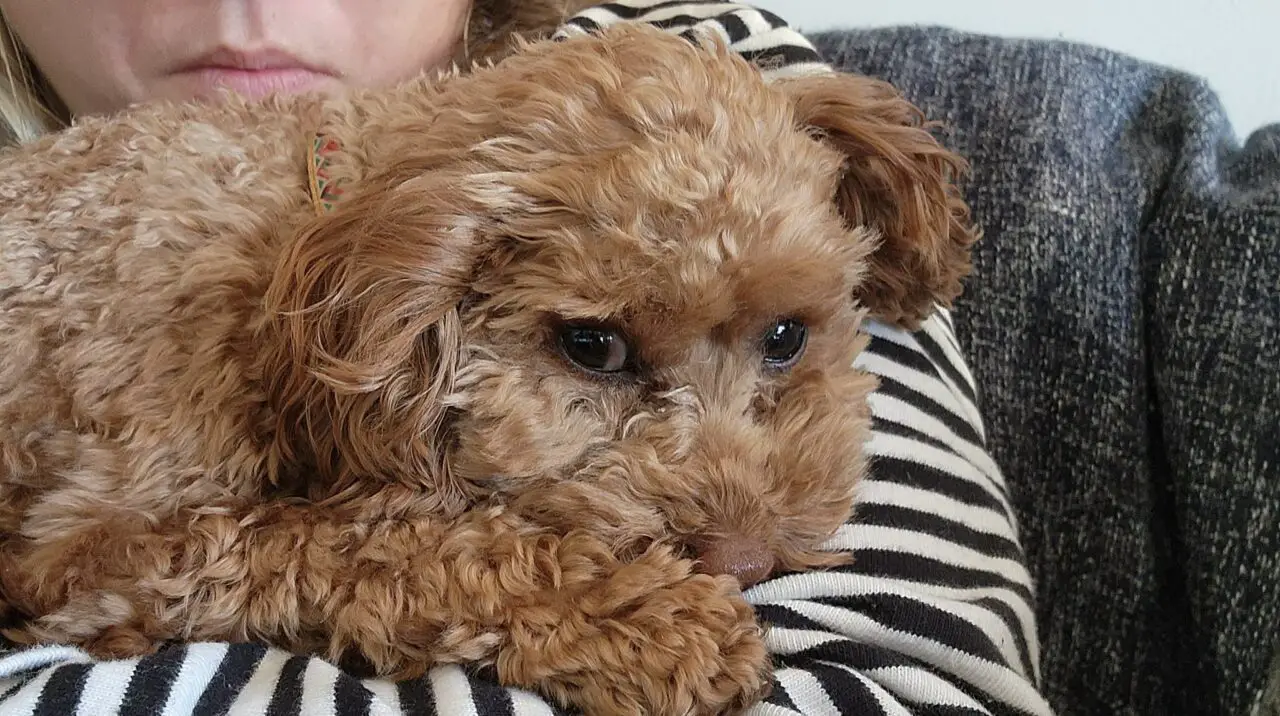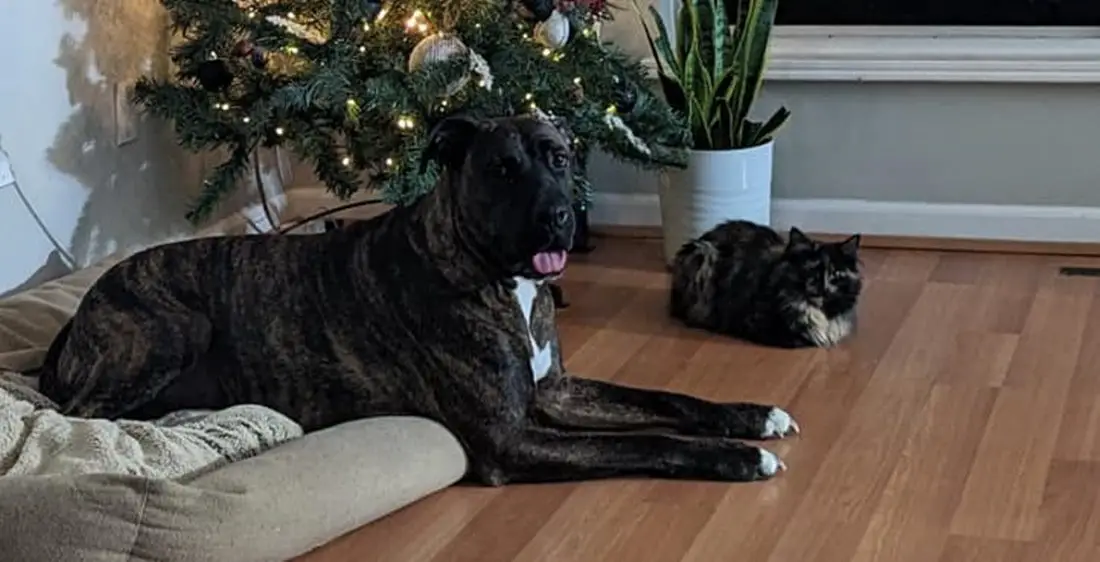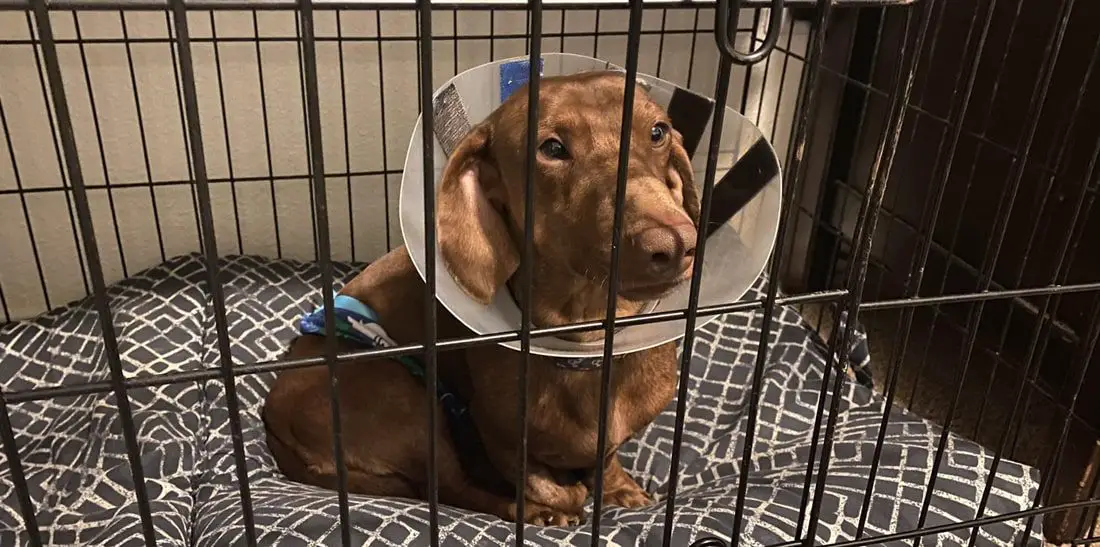If you have a dog, chances are you’ve experienced this before: your dog tries to poop again after already pooping. So, what’s going on? Is this normal?
This can be confusing and frustrating for pet owners, but don’t worry – we’re here to help!
In this blog post, we’ll discuss the possible reasons why your dog is doing this and how to correct the behavior.
Your dog may keep trying to poop after pooping due to reasons such as gastrointestinal issues, anal gland problems, parasites, or constipation, which can cause a feeling of incomplete evacuation.
Why My Dog Keeps Trying To Poop After Pooping
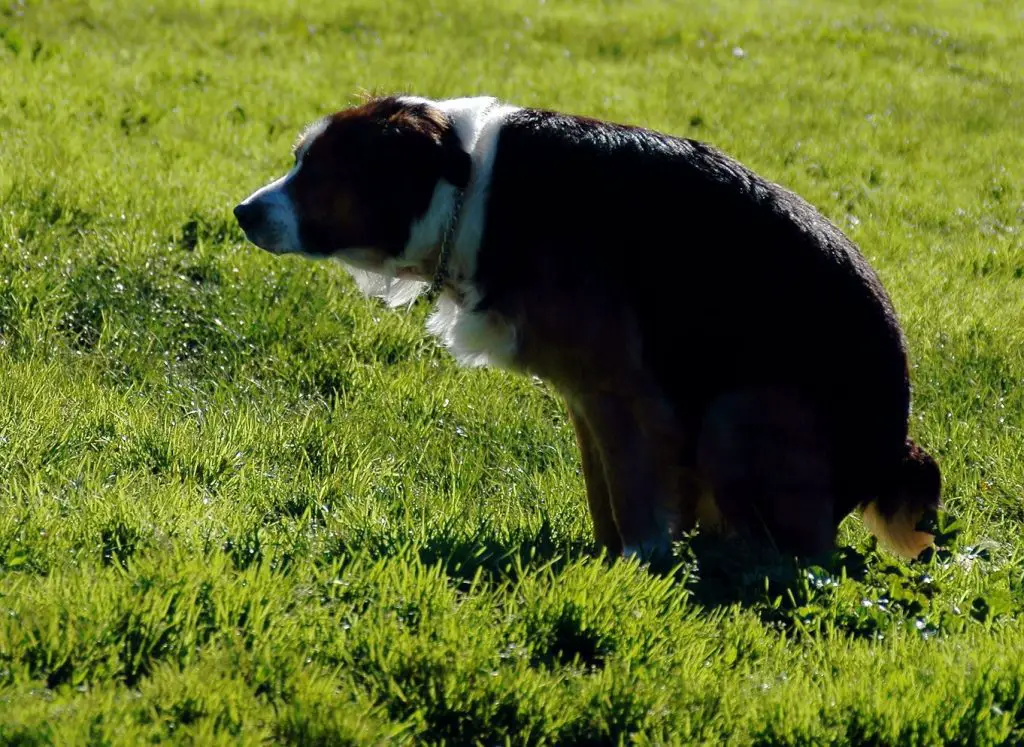
There are a few reasons why your dog might be trying to poop after they’ve already pooped. Some of them are not that serious while others can suggest some health issues. Here is why your dog keeps trying to poop after pooping:
1. Didn’t finish the job the first time
Your dog could be trying to poop after pooping if they weren’t able to fully empty their bowels the first time and now they are trying to finish the job.
The reason for that could be a distraction from a new sight or smell. This is nothing to worry about. The only time that I would be worried is if they try to poop again but nothing comes out.
2. Your dog is nervous or excited
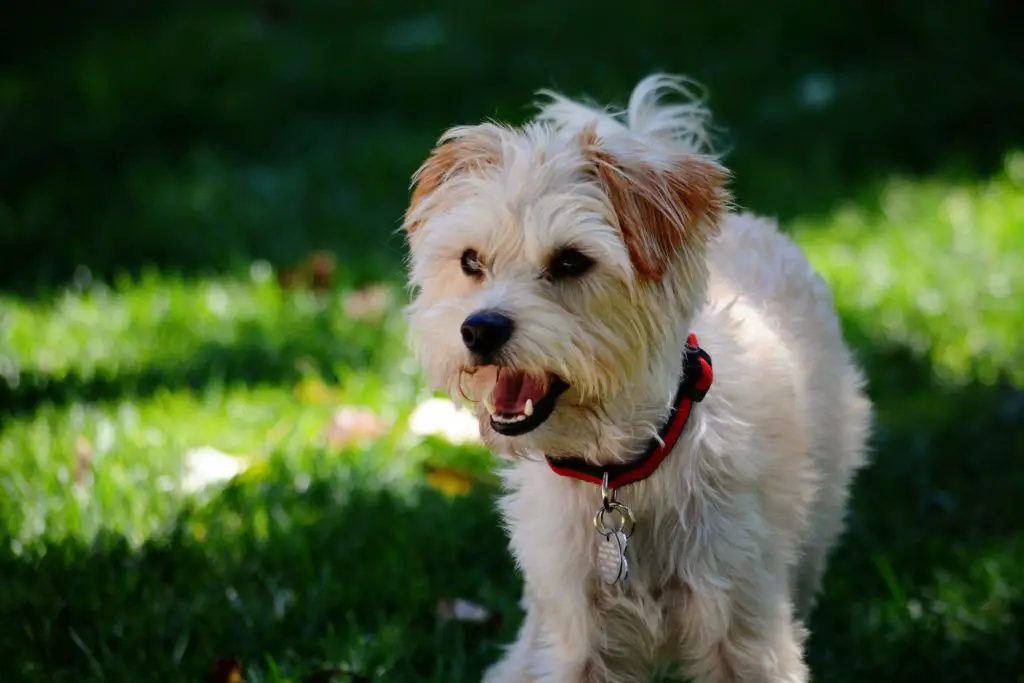
Dogs also tend to defecate more when they’re nervous or excited, so if your dog is going outside for the first time in a while, he may be too anxious to “go” more than once.
First, when dogs are nervous, they tend to eat more. This means that there is more waste in their system. Second, when dogs are nervous, they may not drink as much water.
This can lead to constipation and make it harder for them to poop. Finally, when dogs are nervous, they may not be able to hold it in as well. This can lead to accidents or even diarrhea.
3. Condition called ”Reverse Peristalsis”
If your dog has been trying to poop after pooping, there is a good chance that they may have a condition called “reverse peristalsis.”
This occurs when the muscles in the intestines contract in the wrong direction, which can cause feces to move backwards through the digestive tract.
Reverse peristalsis is when your dog’s digestive system works in reverse. This means that food and liquids move back up the esophagus and into the stomach.
This can happen when your dog is vomiting or has an upset stomach. Reverse peristalsis is a normal part of your dog’s digestive process and is not something to be concerned about.
Here is a study done on Reverse Perstalsis from the National Library of Medicine.
4. Anal gland problems
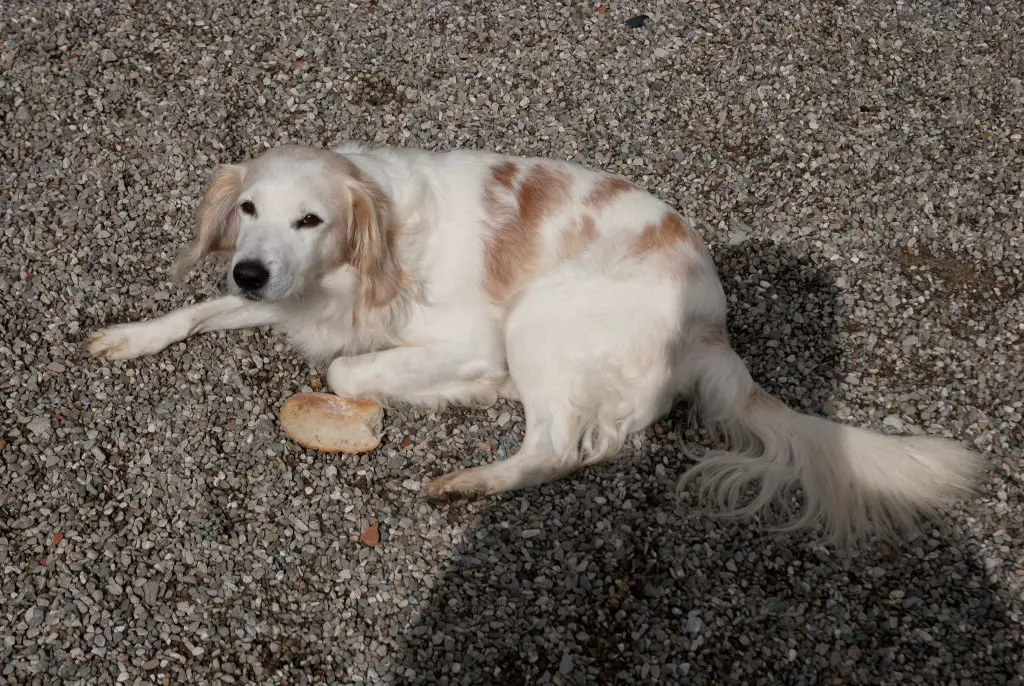
Anal glands can cause pooping problems in dogs. If your dog is having trouble pooping, it could be because of an anal gland problem. Anal glands are small glands that are located near the anus.
They secrete a foul-smelling fluid that helps lubricate the anus and feces. When these glands become full or infected, they can cause your dog to have difficulty defecating.
Most of the time, a dog with anal gland problems will try to poop again after pooping. In this scenario, anal gland expression is needed. If you are not trained to do this task, take your dog to the vet or a professional groomer.
5. Constipation
Constipation in dogs can lead to a sensation of incomplete evacuation, causing them to keep trying to poop even after they’ve already done so.
When a dog is constipated, their stool becomes hard and dry, making it difficult for them to pass. This can result in them straining to defecate, often without success.
The constant urge to eliminate, even when there’s little or nothing left to expel, can make them feel as if they need to keep trying to poop.
In my years of practice, I’ve observed this behavior in many dogs suffering from constipation.
They would strain, crouch, or even cry while attempting to defecate, showing clear signs of discomfort.
Sometimes, these dogs would pass small amounts of liquid feces due to their excessive straining, which could easily be mistaken for diarrhea.
A case study was done on constipation in dogs by Europe PMC.
6. Diarrhea
Diarrhea in dogs can lead to frequent attempts to defecate due to the inflammation it causes in the colon and rectum, resulting in discomfort and the feeling of needing to eliminate more.
When a dog has diarrhea, their digestive system is upset, often leading to frequent and urgent bowel movements.
The inflammation caused by this condition in the colon and rectum can make your dog feel as if they need to continue trying to poop, even after they’ve already done so.
This is because the inflammation stimulates the nerves in the gastrointestinal tract, creating a sensation of needing to defecate.
7. Colitis
Colitis, an inflammation of the colon in dogs, can lead to frequent attempts to defecate due to discomfort and the urge brought on by the inflamed bowel.
When a dog suffers from colitis, their colon becomes inflamed, disrupting the normal movement and absorption of water in the colon.
This results in soft or runny stool, often containing mucus or red blood, and an increased frequency of bowel movements.
The inflamed bowel can also create a sensation of constant need to eliminate, causing your dog to persistently attempt to poop even after they’ve done so says MSD Manual.
8. Presence of foreign bodies
The presence of foreign bodies in a dog’s digestive tract can cause discomfort and the sensation of needing to defecate frequently, leading to your dog trying to poop even after they’ve already done so.
When dogs ingest indigestible objects, it can disrupt their normal digestive process.
These foreign bodies can get lodged in the intestines, creating a blockage or partial blockage that makes it hard for your dog to pass stool normally.
As a result, your dog may feel an urge to defecate more often than usual and may strain or show signs of discomfort while trying to poop.
9. Parasitic infections
Parasitic infections in dogs can cause inflammation in the gastrointestinal tract, leading to frequent bowel movements and the sensation of needing to defecate even after pooping.
Parasites such as Giardia and Coccidia, along with intestinal worms like hookworms, roundworms, and tapeworms, can infect a dog’s digestive system.
These parasites cause irritation and inflammation in the intestines, resulting in symptoms such as diarrhea, blood or mucus in the stool, and an increased urge to defecate.
This can lead your dog to keep trying to poop even after they’ve already done so says VCA Hospitals.
10. Dietary indiscretions
Dietary indiscretions, such as eating garbage, spoiled food, or abrupt changes in diet, can disrupt a dog’s digestive system and cause frequent bowel movements or the feeling of needing to defecate even after pooping.
When dogs consume inappropriate food items or experience sudden changes in their diet, it can lead to a condition commonly referred to as “garbage gut” or dietary indiscretion.
This condition disrupts the normal functioning of a dog’s digestive system, often resulting in symptoms like diarrhea, vomiting, lack of appetite, and weakness.
One of the more notable symptoms is the increased urge to defecate, which can lead your dog to keep trying to poop even after they’ve already done so.
11. Proctitis
Proctitis, an inflammation of the rectum and anus in dogs, can lead to painful defecation and a constant urge to have a bowel movement, causing your dog to keep trying to poop even after they’ve already done so.
When dogs suffer from proctitis, their rectum and anus become inflamed. This inflammation can be due to various causes such as infections, trauma, or immune-mediated diseases.
The inflamed rectum can cause discomfort and pain during defecation, leading to symptoms like straining, bloody stools, and a frequent urge to defecate as per Wag Walking. Hence, your dog might continue to try to poop even after they’ve already done so.
12. Medications
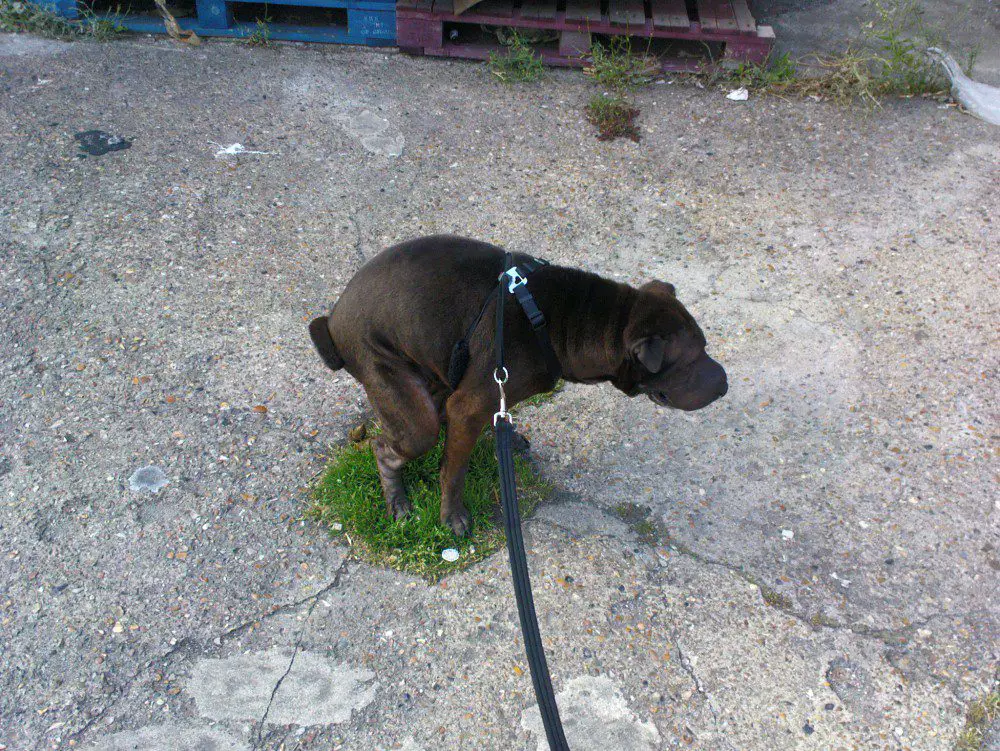
Certain medications like antihistamines, diuretics, and non-steroidal anti-inflammatory drugs can cause alterations in a dog’s bowel movements, leading to symptoms such as trying to poop even after they’ve already done so.
Medications can have varying effects on a dog’s digestive system.
Antihistamines, for example, are commonly used to treat allergies in dogs but can lead to constipation due to their drying effect on the body’s mucous membranes.
Diuretics, which are often prescribed for heart conditions, can also lead to constipation by causing dehydration.
Non-steroidal anti-inflammatory drugs (NSAIDs), used for pain relief, can sometimes cause gastrointestinal upset, including changes in stool consistency and frequency.
How To Help a Dog That Tries To Poop After Pooping
Helping a dog that continues to strain or tries to poop after already defecating can involve dietary changes, increased hydration, more exercise, and potentially the use of vet-prescribed laxatives or stool softeners, depending on the root cause.
Dietary Changes
Dogs suffering from constipation or painful defecation can often benefit from a high-fiber diet.
As a veterinarian, I’ve seen many cases where adding more fiber to a dog’s diet helps to increase stool bulk, making it easier for their intestines to move things along.
Foods like plain pumpkin can provide this much-needed fiber. However, it’s essential to use pure pumpkin, not the pie mix with spices.
Hydration
Keeping a dog well-hydrated is crucial in preventing and treating constipation. Water aids in keeping both the dog and their stool hydrated.
In my practice, I often remind pet owners that ensuring their dogs have constant access to fresh water can help alleviate constipation issues.
Exercise
Regular exercise can also greatly help dogs experiencing constipation. Physical activity stimulates normal gut motility, making it easier for dogs to pass stool says AKC.
I’ve recommended simple solutions like longer walks or more playtime to many dog owners and have seen significant improvements in their pets’ bowel movements.
Vet-Prescribed Remedies
In some cases, dietary changes, hydration, and exercise may not be enough. If a dog is still struggling, a vet may recommend a bulk-forming laxative or stool softener.
These treatments should only be used under veterinary supervision. In my own practice, I’ve prescribed these remedies for short-term use to help alleviate a dog’s constipation and discomfort.
Training
For puppies or dogs struggling with housetraining, establishing a reward system can be beneficial.
As a vet, I’ve suggested that pet owners decide on a special treat that their puppy or dog will only get after pooping or peeing outside.
This positive reinforcement can help establish good habits and reduce the likelihood of a dog straining to poop indoors after already defecating outside.
Why Is My Dog Straining To Poop But Is Not Constipated?
There are many potential reasons why your dog may be straining to poop but not constipated. Some common causes include:
1. A blockage in the intestines
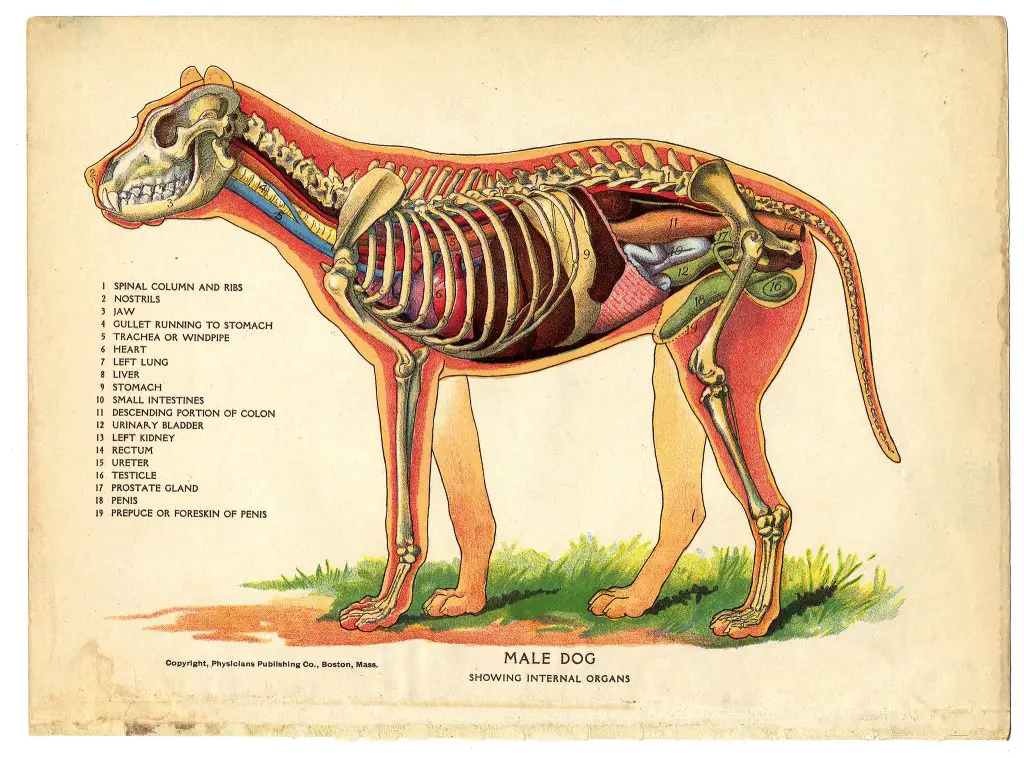
A blockage in the intestines can cause your dog to strain to poop while it is not constipated. This can be caused by a variety of things, including eating something they shouldn’t have (like a bone or toy), an intestinal tumor, or even just eating too much too fast.
Blockage in the intestines is a serious condition that can be life-threatening. If not treated promptly, it can cause severe damage to the intestine and may even lead to death.
Symptoms of blockage include vomiting, diarrhea, loss of appetite, weight loss, and abdominal pain. If your dog shows any of these signs, it is important to seek veterinary care immediately.
Treatment usually involves surgery to remove the blockage and repair any damage to the intestine. With prompt treatment, most dogs make a full recovery says PetMD.
2. Inflammation of the bowels
Inflammation of the bowels may cause your dog to strain to poop, even though it is not constipated. There are many different types of bowel inflammation in dogs, each with its own set of symptoms and causes.
The most common type is colitis, which is inflammation of the large intestine. Other types include gastritis (inflammation of the stomach), enteritis (inflammation of the small intestine), and ileitis (inflammation of the ileum, or lower part of the small intestine).
Symptoms may include vomiting, diarrhea, weight loss, appetite loss, abdominal pain, and blood in the stool.
Causes can range from dietary indiscretion to food allergies to inflammatory bowel disease. Treatment depends on the underlying cause but may involve antibiotics, anti-inflammatory medications, changes in diet, and/or other therapies.
3. Muscle weakness
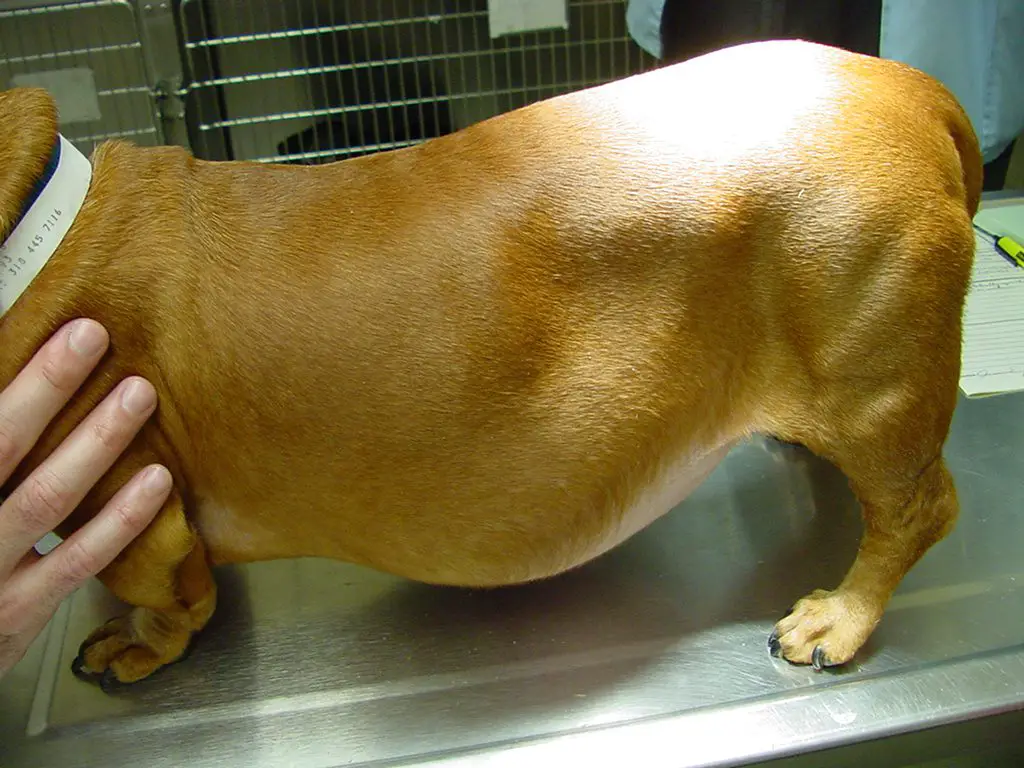
One common cause of muscle weakness in dogs is an injury or illness. This can make it difficult for your dog to control its bowels and may cause it to strain when pooping.
In some cases, the muscle weakness may be temporary and will resolve itself with time and rest. However, if the muscle weakness is severe or persists for a long period of time, it may need to be treated by a veterinarian.
Another common cause of muscle weakness in dogs is old age. As dogs age, they often experience a decline in muscle mass and strength. This can make it difficult for them to control their bowels and may cause them to strain when pooping says Vetster.
Often, this type of muscle weakness is not reversible and will only get worse as your dog gets older.
If you notice that your dog is straining to poop or seems to be having difficulty controlling its bowels, it is important to take it to the veterinarian.
They will be able to determine the cause of the muscle weakness and recommend the best course of treatment. If the muscle weakness is due to an injury or illness, it is important to get your dog treatment as soon as possible.
If the muscle weakness is due to old age, there is not much that can be done to treat it, but your veterinarian can help you manage the symptoms and make your dog more comfortable.
How To Prevent Bowel Movement Troubles In Dogs
Preventing bowel movement troubles in dogs generally involves maintaining a balanced diet, ensuring adequate hydration, providing regular exercise, and considering the use of probiotics or acupuncture under veterinary guidance.
Balanced Diet
A balanced diet is key in preventing bowel movement troubles in dogs. High-quality dog food that’s rich in fiber can help maintain regular bowel movements.
As a practicing veterinarian, I’ve seen many dogs benefit from dietary adjustments, with higher fiber content aiding their digestive health and reducing constipation incidents.
Hydration
Proper hydration is crucial to keep a dog’s digestive system functioning smoothly. Dehydration can lead to constipation, so it’s important for dogs to always have access to fresh water.
In my practice, I’ve observed that simple steps like keeping water bowls filled and clean can significantly improve a dog’s hydration status and prevent digestive issues.
Regular Exercise
Physical activity stimulates the intestines and can help prevent constipation in dogs. Regular walks, fetch games, and other forms of exercise can be very beneficial.
During my years as a vet, I’ve advised numerous pet owners to incorporate more physical activities into their pets’ routines, often leading to noticeable improvements in their bowel movements.
Probiotics and Acupuncture
In some cases, daily probiotics and acupuncture may foster regular bowel movements and promote a healthy intestinal tract.
As a veterinarian, I’ve seen dogs respond positively to these treatments, showing improved digestion and fewer bowel movement troubles. However, these strategies should only be pursued under professional supervision.
Veterinary Interventions
If a dog is suffering from chronic constipation, more intervention may be necessary.
Treatments such as fluid therapy, enemas, stool softeners, or laxatives can be used. Manual removal of impacted stool might also be required, but this should only be performed by a professional.
In my experience as a vet, these interventions have been critical in managing severe cases of constipation in dogs.
When To Seek Medical Assistance For a Dog Straining To Defecate
Medical assistance should be sought for a dog straining to defecate if the animal has not had a bowel movement in 48-72 hours, is showing signs of discomfort or pain, or is unable to pass gas or feces without help.
Recognizing Symptoms
Recognizing the symptoms of constipation in dogs is key to knowing when to seek veterinary help.
These symptoms can include a lack of defecation for a few days, hard or pebble-like stool, straining without producing much stool, and signs of discomfort or distress.
In my practice as a veterinarian, I’ve seen dogs show these symptoms in varying degrees, and it’s always important to take them seriously.
Constipation Duration
The duration of constipation is a crucial factor in deciding when to seek veterinary intervention. If your dog has not had a bowel movement in 48-72 hours, it’s time to call the vet.
This timeframe aligns with what I’ve observed in my professional experience – after two to three days without a bowel movement, dogs commonly start to exhibit signs of distress and discomfort.
Physical Discomfort
Physical discomfort or pain associated with passing feces is another sign that veterinary help is needed.
Dogs may strain, cry, or crouch when trying to defecate, which indicates they’re experiencing pain. In my years as a vet, I’ve treated numerous dogs showing these signs, and prompt medical attention has always been essential in alleviating their discomfort.
Inability to Pass Feces or Gas
If a dog is unable to pass feces or gas without assistance, this could indicate obstipation – a severe form of constipation resistant to treatment.
This condition is considered a veterinary medical emergency and requires immediate care. In my practice, I’ve encountered a few cases of obstipation, and immediate intervention was critical to prevent further complications.
FAQs
Q: What is the difference between diarrhea and constipation in dogs?
A: Diarrhea is characterized by loose or watery stool, while constipation is the difficulty or infrequency in passing stool. Both conditions can cause discomfort and it is important to identify the cause in order to provide proper treatment.
Q: Can changing my dog’s diet cause them to have trouble pooping?
A: Yes, a sudden diet change can disrupt the digestive system and lead to issues such as diarrhea or constipation. It is important to introduce any dietary changes gradually to allow your dog’s digestive system to adjust.
Q: What are some common causes of diarrhea in dogs?
A: Common causes of diarrhea in dogs include dietary indiscretion, food allergies, intestinal parasites, viral or bacterial infections, and inflammatory bowel disease. It is best to consult with a veterinarian to identify the specific cause and appropriate treatment.
Q: What should I do if I notice blood in my dog’s stool?
A: The presence of blood in the stool can be a sign of a serious underlying condition. It is important to have your dog examined by a veterinarian as soon as possible for a proper diagnosis and treatment.
Q: Is it normal for a puppy to have more frequent bowel movements?
A: Yes, puppies tend to have more frequent bowel movements compared to adult dogs. This is because their digestive system is still developing. However, if you notice any sudden changes in their bowel movements or other concerning symptoms, it is best to consult with a veterinarian.
Q: Can worms cause my dog to have trouble pooping?
A: Yes, intestinal parasites such as worms can cause symptoms such as diarrhea, constipation, or straining to defecate. Regular deworming and preventive measures can help manage and prevent such issues. Consult with a veterinarian for proper diagnosis and treatment.
Q: What should I do if my dog is dehydrated due to diarrhea or vomiting?
A: If your dog is showing signs of dehydration such as excessive thirst, dry gums, or lethargy, it is important to provide them with access to clean and fresh water. In severe cases, or if the symptoms persist, it is advisable to consult with a veterinarian for further evaluation and treatment.
In Conclusion
While it can be frustrating to deal with a dog trying to poop again after already going, it’s important to understand that this behavior is not uncommon.
There are several reasons why your dog may be doing this, including incomplete bowel movements, nervousness, and medical conditions.
By understanding the underlying cause and addressing any necessary changes, you can help your furry friend feel more comfortable and ensure their overall health and well-being.

